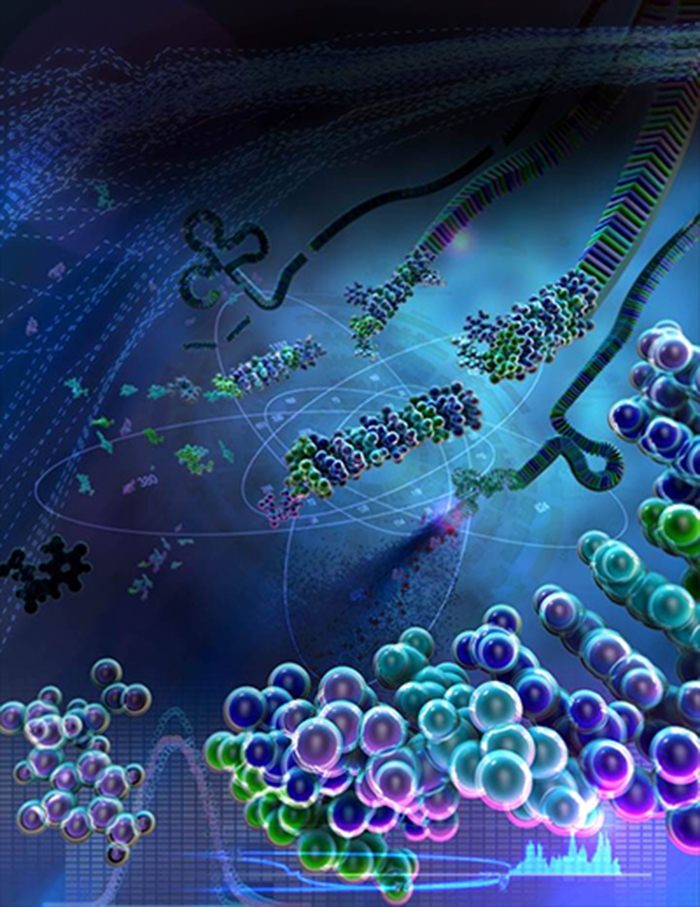The many different approaches used to sequence RNA, even severely degraded RNA, can produce relatively similar results, a finding that should reassure patients, physicians and scientists faced with a variety of new technologies that have flourished over the last several years, new research from Weill Cornell Medical College suggests.
Scientists and physicians have been using RNA sequencing — which can characterize essentially any condition with a genetic basis, from prenatal birth defects to cancers among the elderly – with increasing frequency over the past five years. But it was unknown whether these next-generation sequencing platforms produced reliably similar results, and this represented a looming question for researchers, clinicians, and the Food and Drug Administration (FDA).

RNA molecules profiled with many technologies. This image shows the atomic-scale view of RNA molecules (spheres) with secondary structures (loops), and a collection of images (Venn diagram, gene-body coverage plot, and sequence plots) from a series of papers featured in Nature Biotechnology this month. Image credit: Nature Biotechnology/Sam Spaeth
"One of the goals of the project was to establish extremely high standards for RNA sequencing," said Dr. Christopher Mason, an assistant professor in the Department of Physiology and Biophysics and assistant professor in the HRH Prince Alwaleed Bin Talal Bin Abdulaziz Al-Saud Institute for Computational Biomedicine at Weill Cornell. "While there is no single perfect platform, in general, for most genes, most of the time, the technologies are fairly concordant."
The results of the research, which was led by Dr. Mason and done in collaboration with the FDA and the Association of Biomolecular Resource Facilities, were published Aug. 24 in a series of three articles in Nature Biotechnology and featured on the cover. The project assessed all current technologies and major biochemical methods for RNA sequencing, examining the work of more than 30 RNA-sequencing labs and hundreds of researchers.
Practically speaking, the results suggest that if, for example, the RNA from a cancer patient’s tumor was sequenced at different labs, the results from each lab would be reliably similar to one another; the physician ordering the test would not have to worry about which sequencing technology was used to characterize the tumor’s RNA. It also means that if for some reason a researcher was forced to switch to different RNA-sequencing protocols in the middle of a series of tests, she could continue her experiment, knowing that the two different protocols would produce similar results (if proper design were maintained, including read length and sequencing depth).
Additionally, even when laboratory errors do arise, Dr. Mason’s group has established the best means by which to combine data or methods across different laboratories, a needed step for validation of a clinical result. "This is also critical for large-scale, international genomics projects that are creating data across many sites," said Dr. Sheng Li, who was first author of the three studies.
In addition, Dr. Mason’s team demonstrated that the RNA from severely degraded tissue samples — those, for example, called FFPE that have been sitting in storage for many years — can be salvaged through a chemical process and accurately sequenced.
"Even if a sample is very old, degraded or damaged, you can still use it," said Dr. Mason, who is also an assistant professor of neuroscience at the Feil Family Brain and Mind Research Institute. "There are hundreds of thousands, if not millions, of samples that are locked in various tissue banks at hospitals and centers around the world. This opens up a large trove of samples that you can now use for research to discover underlying factors and new ways to diagnose disease."
